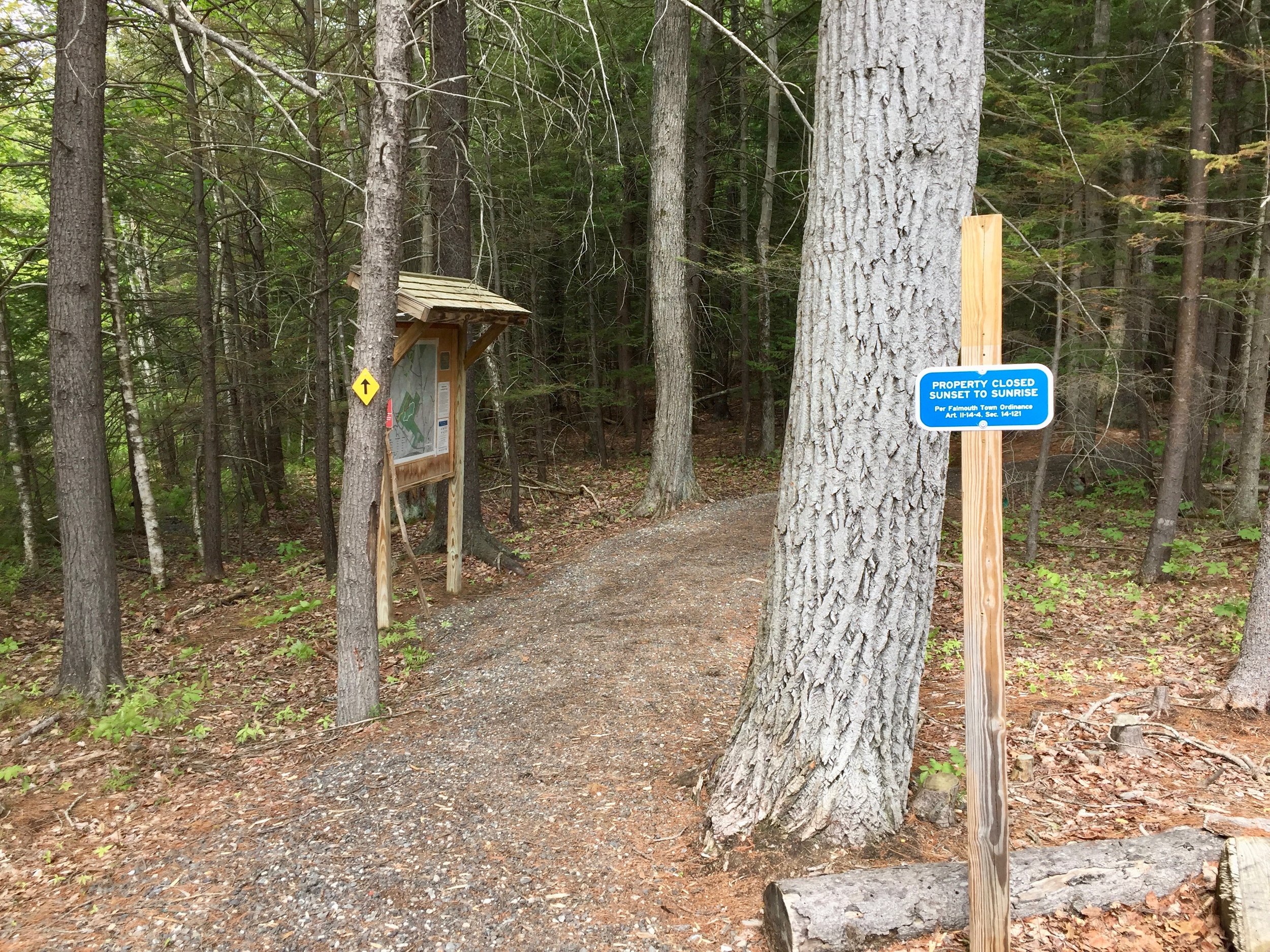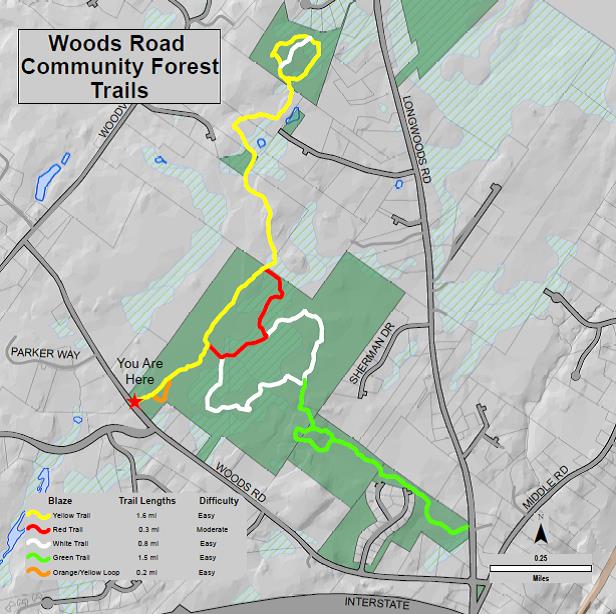Woods Road Community Forest
Click on map to enlarge
Trail Distance and Description
5.25 mile trail system; trails are often rooty and rocky and contain sections of narrow bridging over wet areas; Ladyslipper Trail at Woods Road entrance is a 1/4 mile accessible loop trail that is wider with a flat crushed stone and stone dust surface
Dogs
Must be on leash Dec 1st - Mar 31st per DEP order (wintering deer yard). Allowed off leash under voice control Apr 1st - Nov 30th. Must be on leash within 300 feet of the trailhead.
Bikes
Allowed
GPS Address
34 Woods Rd, Falmouth and
18 Longwoods Road, Falmouth
Parking
Woods Road: unpaved lot with 3-4 parking spaces
Longwoods Road: unpaved lot with 3-4 parking spaces
Additional Information
Ownership
Town of Falmouth
Year Protected
1987
Acreage
~ 206
Property Uses
Hunting, hiking, mountain biking, snowshoeing, cross-country skiing, and nature study are all allowed. Motorized vehicles of all kinds are prohibited except snowmobiles on marked trails. The lower portion of the Woods Road entrance trail is accessible by people with limited mobility.
Additional Directions
From I-95 take exit 52 for the Falmouth Spur. Continue approximately 4 miles and take the US-1 S/I-295 S exit toward Falmouth/Portland on the right. Merge onto US-1 S and turn right onto Bucknam Rd at the first traffic light. Continue for approximately half a mile and turn right onto Middle Road (State Route 9 E). At the traffic circle, take the 3rd exit onto Woods Rd. The trailhead parking lot will be about a mile down on the right.
Property Description
Woods Road Community Forest is the oldest forest stand in Falmouth and one of the oldest in southern Maine. Many of the pine, hemlock, and spruce trees growing here are 80-120 years old. The primary management goal for this property is to preserve the majority of the forest as a "forever wild" property, while doing the harvesting required to create winter browse (food) for deer on a much smaller portion of the property.
History
The town obtained the Forest in 1987 when The Woodlands Club purchased 100 of its original 140 acres and donated it to offset the impact Club development had on an existing deeryard. Forty acres of abutting town-owned land was set-aside at the same time, and 21 acres of land became part of the Forest when the Cornerstone subdivision was created in 1995. Most of the parcel is protected by Department of Environmental Protection order, which requires that it be managed as a deeryard. Future development is prohibited on all 161 acres.
Habitat
The many large trees growing here are the most striking natural feature of this forest. While not yet a late successional forest, it will be in another 30-50 years. Deer and woodland birds such as thrushes and canopy nesting warblers are common. More diverse flora and fauna can be found in the wetland areas within the forest.





